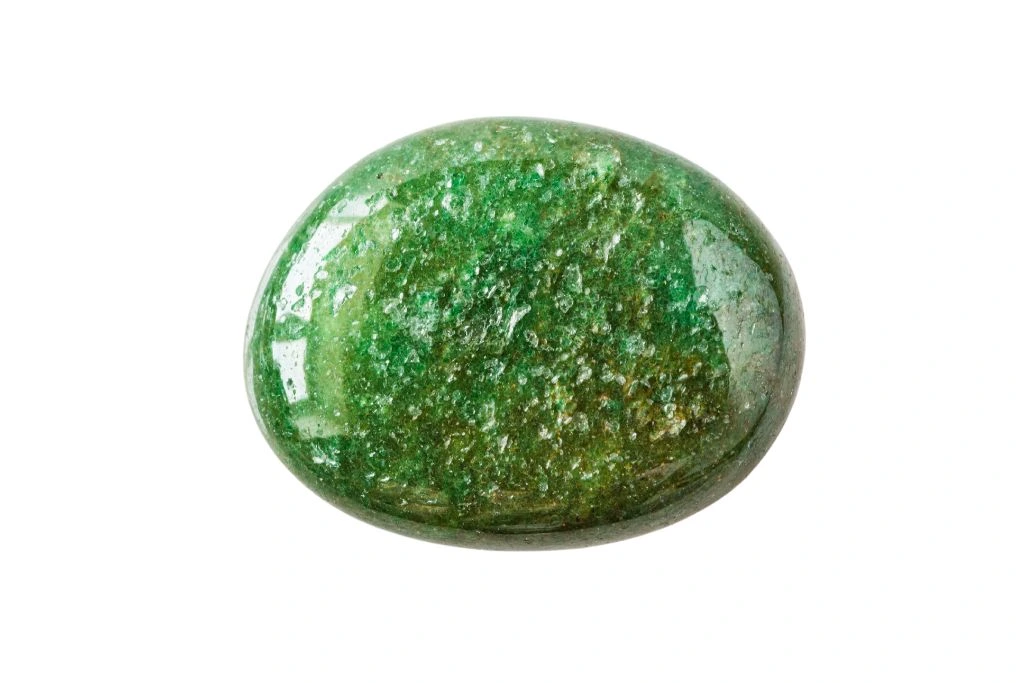Appearance and Color of Aventurine
Aventurine is a striking and versatile quartz variety known for its shimmering appearance. This crystal typically displays a range of green hues, from pale seafoam to deep forest green. However, it can also occur in shades of blue, red, orange, and brown. The most distinguishing feature of aventurine is its sparkling effect, known as aventurescence, which gives the stone a glittery or metallic luster.
Crystal Structure and Composition
Aventurine has a microcrystalline quartz structure, composed of interlocking quartz crystals. What sets it apart is the presence of small, flat mineral inclusions that create its signature sparkle. These inclusions are often made up of fuchsite, a chromium-rich variety of muscovite mica, which gives green aventurine its characteristic color and shimmer. Other minerals like hematite or pyrite may be present in different color varieties.
Notable Physical Characteristics
The crystal typically forms in massive habits, meaning it occurs in large, shapeless masses rather than well-defined crystal formations. Aventurine has a Mohs hardness of 6.5 to 7, making it relatively durable for use in jewelry and decorative objects. Its surface is usually smooth and can take a high polish, enhancing its lustrous appearance. When cut and shaped, aventurine often exhibits a translucent to opaque quality, allowing light to penetrate partially through the stone.
Unique Features of Aventurine
What truly makes aventurine stand out is its captivating play of light, reminiscent of tiny stars twinkling within the stone. This effect is particularly pronounced when the crystal is moved or viewed from different angles. Additionally, some specimens of aventurine may display chatoyancy, a cat’s-eye effect that appears as a bright line across the surface when the stone is cut en cabochon. These optical phenomena, combined with its variety of colors, make aventurine a favorite among crystal enthusiasts and jewelry designers alike.
Historical and Cultural Significance of Aventurine
Aventurine has been prized for centuries, with its use dating back to ancient civilizations. The Greeks and Romans associated this stone with prosperity and good fortune. In ancient Tibet, aventurine was used to improve nearsightedness and to boost creativity. The stone’s name comes from the Italian “a ventura,” meaning “by chance,” referring to the accidental discovery of aventurine glass in the 18th century.
Metaphysical Properties and Associations
In the realm of crystal healing and metaphysics, aventurine is often associated with the heart chakra. It is believed to promote emotional balance, harmony, and well-being. Many practitioners consider aventurine a stone of opportunity, thought to increase one’s chances of success and prosperity. It is also associated with leadership qualities and decision-making abilities.
Common Uses and Benefits
Aventurine is widely used in jewelry and decorative objects due to its sparkling appearance. In alternative healing practices, it is often employed in crystal grids or carried as a pocket stone to attract abundance and luck. Some believe that aventurine can help alleviate anxiety and stress, promoting a sense of calm and balance. It is also thought to enhance mental clarity and stimulate creativity, making it popular among artists and entrepreneurs.
Modern Applications
In recent years, aventurine has gained popularity in mindfulness and meditation practices. Many use it as a focus object during meditation sessions, believing it helps to quiet the mind and enhance inner peace. Some modern crystal enthusiasts also incorporate aventurine into their work environments, placing it on desks or in offices to promote success and ward off electromagnetic stress from electronic devices.

